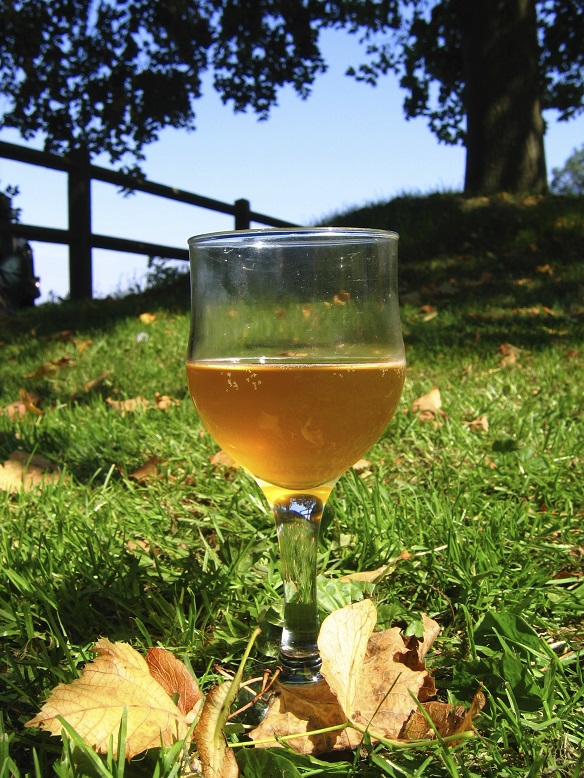 If you love drinking alcohol but also love having clear and radiant skin, then here’s a good piece of news right now: it’s easily possible to do both.
If you love drinking alcohol but also love having clear and radiant skin, then here’s a good piece of news right now: it’s easily possible to do both.
Make no mistake; alcohol itself IS a poison and a toxin. Drinking copious amounts of beer will give you pimples, even red wine can be a one way ticket to an acne nightmare. When abused, alcohol can completely trash your skin’s tone, clearness, youthfulness, and glow…
…but the story is significantly more complicated than that, especially compared to other common acne villains. If you fry meat every day with vegetable oils like sunflower oil, or eat processed foods full of them, the omega 6s will inflame your skin so strongly that no amount of fish oil can save you. If you have the unlucky set of genetics that make your skin sensitive to the proteins, sugars, and peptides in dairy, then milk WILL make your skin burst out with acne; there’s no avoiding it.
With alcohol, however, most of the obstacles related to acne can be overcome. We already have the detoxifying systems in place; ancient humans had been stumbling across wild fermenting berries laced with natural ethanol for millions of years before we invented beer. Your task is simply to strengthen those systems.
Likewise, you might have seen newspaper headlines screaming that “a daily drink slashes risk of heart disease”, or “glass of wine a day keeps high blood pressure away”. It’s a very similar story with acne; binge drinking every night will completely destroy your skin, but getting drunk once per week or even drinking a small amount each day can be perfectly healthy and even beneficial in certain circumstances.
The truth is that alcohol is certainly a negative for acne when isolated, but if you acquire the specialist knowledge it takes next to no effort to drink regularly and still enjoy clear and radiant skin.
Firstly, you need to become an expert on the specific problems alcohol poses:
The main problem – destruction of antioxidant supplies
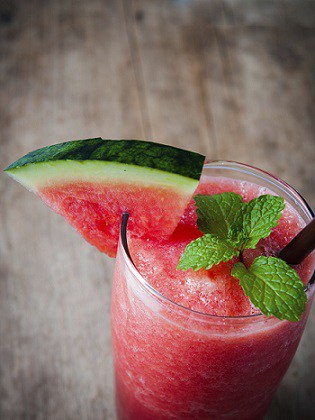 The all-important cycle with which alcohol creates its classic drunken effects happens like this.
The all-important cycle with which alcohol creates its classic drunken effects happens like this.
Firstly, a portion of all alcohol you drink is not metabolised at all and is absorbed through the stomach walls directly into the bloodstream. The rest of the alcohol is sent for digestion and is absorbed through the small intestine, travelling via a large blood vessel to your liver.
Read Annihilate Your Acne – get the greatest diet ever for clear and radiant skin
Then stage 1 of metabolization kicks in – an enzyme called alcohol dehydrogenase breaks the alcohol down into a chemical called acetaldehyde. In stage 2, the acetaldehyde is then broken down into a harmless substance called acetate (naturally found in vinegar) by glutathione and an enzyme called acetaldehyde dehydrogenase.
All alcohol you drink whether it’s a can of Heineken, organic glass of red wine, or a pear schnapps, is broken down by the liver in that simple process….
…and thus the alcohol is dealt with, but what’s important to understand for acne is the massive toxicity of the initial by-product acetaldehyde. The alcohol itself is important; many of the classic mental and physical effects from getting drunk are triggered by the initial surge outlined in stage 1, for example…
One – Alcohol decreases the function of the brain’s limbic system which controls anxiety and fear (resulting in lowered inhibitions and high confidence).
Two – Alcohol messes with your central nervous system and disrupts the communication of brain cells (robbing you of sound judgement)
Three – Alcohol decreases the activity of the cerebellum brain region (decreasing your muscle coordination, increasing dizziness, and making the simple task of walking hilariously difficult).
…but with hangovers it’s a different story. A big portion of the classic symptoms of a hangover are triggered by the by-product acetaldehyde, not alcohol itself.
The splitting headache is a sign of acetaldehyde molecules literally bombarding your brain cells with inflammation. The stomach upset and morning vomiting is a sign of copious quantities of acetaldehyde flooding through your stomach lining.
It’s the acetaldehyde rather than the alcohol itself which leads to massive inflammation of liver cells and ends up scarring it. In fact, acetaldehyde is estimated to be 30 times more toxic than alcohol itself and is classed as a grade 1 carcinogenic (the highest level) by the World Health Organisation.
In other words, acetaldehyde is a seriously nasty chemical. It is vital for your very survival that your liver deactivates and detoxifies as much acetaldehyde as possible…
…and as outlined above, this process calls upon and massively depletes your supplies of glutathione. What is glutathione? Glutathione is the single most abundant antioxidant manufactured by the human body itself, and is equal in importance to the famous vitamin C and vitamin E.
Next: the 6 vitamins and minerals which can massively reduce acne
Glutathione is so vital for protecting tissues and deactivating cell destroying free radicals that it is dubbed the “master antioxidant”, and importantly for us, it is vital for acne too. The depletion of glutathione is behind many skin-related effects you might have noticed from binge drinking; there’s fewer antioxidants to defend cells, so they age faster. There’s less antioxidants to defend cells from UV radiation in sunlight, so they inflame faster.
When your antioxidant supplies are depleted, the oil on your face (sebum) is prone to damage, creating a by-product called squalene peroxide that is among the most potent pore-clogging substances on planet earth. A 2013 study even found that skin samples from acne prone people had 20% less glutathione than their clear-skinned counterparts.
That’s why increasing your body’s antioxidant levels is one of the top 5 strategies I recommend for all acne patients, whether by eating colourful fruits and vegetables or giving your body the materials to make its own supplies…
…and alcohol does the exact opposite of that. Drinking alcohol and especially binge drinking is one of the fastest ways to deplete your vital homemade antioxidant stocks available.
The three secondary problems with alcohol
Next we have the numerous secondary problems resulting from alcohol.
Just as binge drinking has a variety of effects you can easily feel, whether it’s a dry mouth, headache, upset stomach or blurry eyes, so too can alcohol impact your skin through a variety of hidden pathways.
Firstly, increasing amounts of studies are showing that alcohol can damage your digestive function. This study found that acute moderate to high dose ethanol administration significantly increased intestinal permeability, which is the beginning stage of leaky gut syndrome. A second study found that in patients with currently inactive inflammatory bowel disease, 1-3 glasses of red wine per day could again increase intestinal permeability.
Furthermore, acetaldehyde also plays a role; gut bacteria apparently ferment ethanol before it is absorbed into the liver, and churn out acetaldehyde directly into the gut. This both results in standard digestive inflammation, and again, increased intestinal permeability.
Why bread and pasta are a massive cause of acne
What does all this mean? If you’re a regular visitor here or have already read my eBook Annihilate Your Acne, then you’ll know that gut health is a massively overlooked factor in clear skin. A leaky gut has two deadly consequences: 1) it disrupts your absorption of vital acne nutrients, and 2) it creates an unregulated flow of unwanted inflammatory substances directly into your bloodstream.
Next, we have the fact that glutathione is not the only major antioxidant which alcohol depletes. Your vitamin C stores are also called upon to defend liver cells against oxidative stress during alcohol metabolization.
This study compared one healthy group to 3 alcoholic groups with varying natures of liver damage. While the vitamin C stores in the three alcohol groups varied significantly, the mean of the 3 was significantly lower than the vitamin C stocks of the non-alcohol drinking group.
This study even found that 91% of 35 alcoholics had a vitamin C deficiency. You can learn about the hidden greatness of basic vitamin C for acne here, but the gist is that 1) it’s another vital antioxidant, and 2) it keeps the skin strong by aiding the formation of collagen proteins.
Magnesium is another vital acne mineral, involved with sleep quality (very important for acne) and keeping stress hormones at safe levels, but can also be depressed by alcohol. Why?
Magnesium is a key precursor to glutathione (alongside zinc and selenium), so the further your glutathione production is sent into overdrive to compensate for drinking, the emptier your magnesium stores become. The result is the same, less defences against acne.
Then there’s the acetaldehyde. We discussed earlier how glutathione is used to detoxify this substance; well, if your reserves of glutathione run too low then this is impossible. In binge drinking the detoxification of acetaldehyde is aborted.
The 7 greatest topical treatments for naturally clear skin
The toxin flooding your body then has detrimental effects beyond a simple hangover; it has a strong power to crank up levels of chronic inflammation, the single biggest internal cause of acne. Acetaldehyde attacks cells so strongly that your immune system identifies it as a major threat and goes into all-out attack mode.
To us, an overactive immune system means only one thing – big, red, and swollen pimples.
Last of all, there’s the bonus problems with individual alcoholic drinks. Wine can contain massive amounts of pesticides, swilling can after can of beer can add to your carbohydrate intake and make your skin oily, and common cocktails are often loaded with sugar. More on specific drinks later…
The verdict – how to drink alcohol and have clear skin
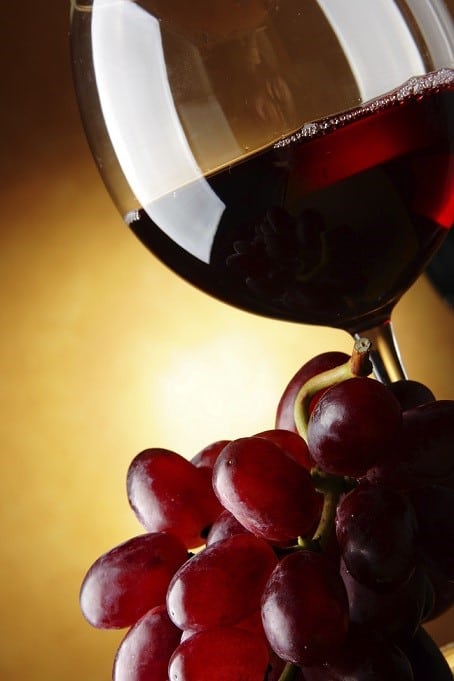 To recap, drinking alcohol can trigger the birth of new acne and otherwise damage your skin. The main mechanisms are 1) depleting vital antioxidants and nutrients, 2) disrupting gut health, and 3) increasing bodily inflammation levels.
To recap, drinking alcohol can trigger the birth of new acne and otherwise damage your skin. The main mechanisms are 1) depleting vital antioxidants and nutrients, 2) disrupting gut health, and 3) increasing bodily inflammation levels.
But does this mean you have to abandon alcohol forever? The answer is – definitely not.
It is completely possible to enjoy alcohol on a regular basis yet still not have the most miniscule of pimples.
First of all, the three main problems above will happen to some extent, it’s inevitable, but they’re also very easy to defend against.
For example: the inflammatory acetaldehyde only starts roaming around your bloodstream if your stores of glutathione get depleted, so you can make sure they don’t. Alcohol will set back your progress if you’re on a determined mission to improve your gut health, but more nutritious drinks like red wine could even be beneficial otherwise. Depletion of glutathione itself can be avoided very easily by providing the extra building blocks like magnesium and amino acids (see below).
With vitamin C and magnesium you can simply arrange your diet and supplements to either take more or eat more. For instance, one dead easy strategy to minimise the damage would be to bring a massive box of raspberries along to the bar with you and leave them on the table, so that when the insane urge to eat random food inevitably kicks in, that’s the first thing in front of you.
Using the principles above, and the strategies outlined in detail later, avoiding the damage from alcohol can be very easy AS LONG AS you’re not binge drinking every night.
Secondly, if you’re like the vast majority of acne patients you won’t have to be 100% strict anyway.
Look at it from this viewpoint. Vegetable oils = deadly for your skin (read Annihilate Your Acne and find out why), also unnecessary and dull. Alcohol = a negative overall but tasty to drink and great fun. If you make the majority of your diet and lifestyle acne-friendly by eliminating the acne villains which are completely unnecessary, whether it’s canola oil or tasteless white bread, you’ll easily have room for one or two indulgences and alcohol can be one of them.
What’s more, alcohol in moderation can actually have benefits. Studies have shown that daily drinkers sometimes enjoy lower stress hormone levels, due to the inebriation; that could be excellent for acne if your pimples are a result of chronic stress. Outside the realm of acne, drinking can lower high blood pressure nicely because ethanol triggers the release of nitric oxide, a highly potent vasodilating gas.
Vitamin D – the greatest nutrient for a bright and glowing skin tone
Overall, alcohol is negative when isolated but not pure evil, so your strategy is simple.
It’s a bad idea to binge drink constantly, as the negative effects will then become overwhelming, but you can still get drunk every week or maybe even twice a week if you take steps to replenish your glutathione and vitamin C stocks afterwards. Daily drinking of no more than one glass of wine per day or the equivalent is safe as long as your diet and lifestyle are in excellent shape…
How to strengthen your skin’s alcohol defences
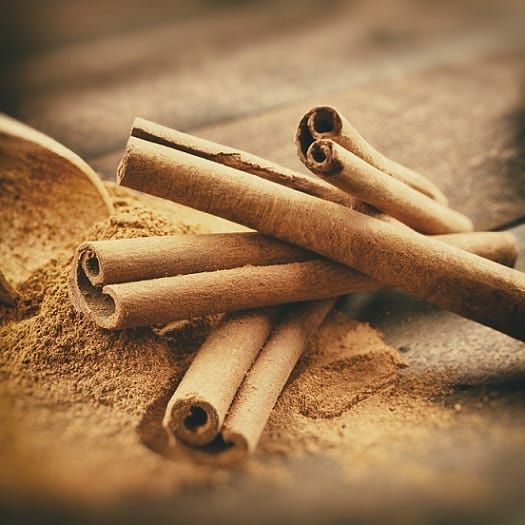 …and therefore, the final step is to strengthen your body to minimise the damage. You can still experience the joys of alcohol, but to keep your skin as strong as humanly possible, follow the simple instructions below:
…and therefore, the final step is to strengthen your body to minimise the damage. You can still experience the joys of alcohol, but to keep your skin as strong as humanly possible, follow the simple instructions below:
One – get more magnesium. Goal – to provide the supplies for glutathione. Magnesium is part of the holy trinity of nutrients needed to synthesise glutathione, making it one of the best nutrients for acne ever.
The RDA for magnesium is 400mg per day, but many scientists believe that 800mg per day is more appropriate, and if you’re drinking alcohol regularly, I’d definitely recommend approximately 800mg per day. Unfortunately, magnesium levels in common foods have drastically declined to unnaturally low levels due to 1) synthetic pesticide abuse, and 2) abandonment of traditional soil replenishment.
For that reason, I consider magnesium to be one supplement that everyone should take, acne clearing enthusiast or not, and my favourite is this Ancient Minerals Magnesium Oil (amazon link).
This oil is applied directly to the skin and is absorbed directly into the bloodstream, bypassing the digestive system where magnesium is sometimes poorly absorbed. With this supplement it’s often shocking how fast the effects kick in. If you try 16 squirts equal to 400mg total magnesium on your body for 15 minutes (wash it off in the shower) for a few days, and then start feeling massively relaxed and sleeping easily like you’ve been cycling up a mountain all day, that’s a clear sign that your magnesium levels are increasing.
For a convenient, pure and powerful bottle of capsules, meanwhile, Pure Encapsulations Magnesium Glycinate (amazon link) is perfect.
These pills are in the superbly absorbed magnesium glycinate form, magnesium molecules bound to the amino acid glycine, a form which is far more bioavailable than the common magnesium oxide. The glycine itself is also a nice bonus, being vital for alcohol protection (keep reading).
Two – increase your zinc intake. Goal – to provide the supplies for glutathione. Zinc performs the exact same role as magnesium. Sources of zinc are generally animal foods like meat, seafood and eggs. The greatest source is oysters, with over 600% of the RDA per 100 gram serving. My recommended supplement is the food-based and pure MegaFood Zinc (amazon link). This supplement even comes with an extra fruit and vegetable blend, featuring broccoli and beetroot. A more dedicated but just as pure and effective alternative is this Thorne Research Zinc Picolinate (amazon link).
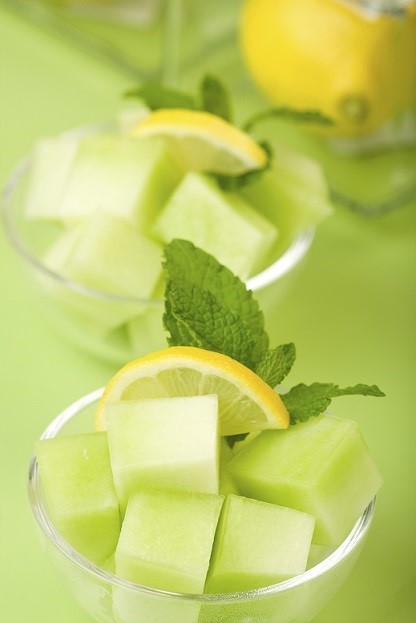 Three – get vitamin C. Goal – to boost your supplies against depletion. The recommended daily intake for vitamin C is 60mg, approximately equal to a serving of broccoli or strawberries, but this is criminally low. For acne purposes I’d recommend 200mg or higher, and if you’re drinking regularly I’d recommend even more.
Three – get vitamin C. Goal – to boost your supplies against depletion. The recommended daily intake for vitamin C is 60mg, approximately equal to a serving of broccoli or strawberries, but this is criminally low. For acne purposes I’d recommend 200mg or higher, and if you’re drinking regularly I’d recommend even more.
Luckily, vitamin C is one of the easiest nutrients to obtain through clean food. Broccoli, spinach, strawberries, classic white potatoes, lettuce, raspberries, oranges, pineapple, bell peppers, and more are all great sources.
My recommended supplement is this Terrasoul Superfoods Raw Camu Camu Powder (amazon link), which is derived from the Peruvian camu camu berry and has all the natural co-factors and enzymes necessary for maximum absorption.
If you merely want a convenient pill then this Garden of Life Raw Vitamin C (amazon link) is also naturally derived, and has a massive 500mg per pill. See this article for a full guide to vitamin C.
Four – get selenium. Goal – to provide the supplies for glutathione. The final glutathione boosting mineral, which will be depleted just like the others while your liver metabolises alcohol.
Luckily, selenium is very easy to obtain. The first option is to arrange a diet with plenty of good quality animal foods, and in particular, eggs and seafood such as salmon.
The second option, the nuclear option, is to just eat two Brazil nuts per day. A single 5 gram nut contains 95.9mcg, 137% of the RDA. A good bulk brand is these Terrasoul Superfoods Raw Brazil Nuts (amazon link), while the ultimate bottle of selenium capsules is this Pure Encapsulations Selenium (amazon link).
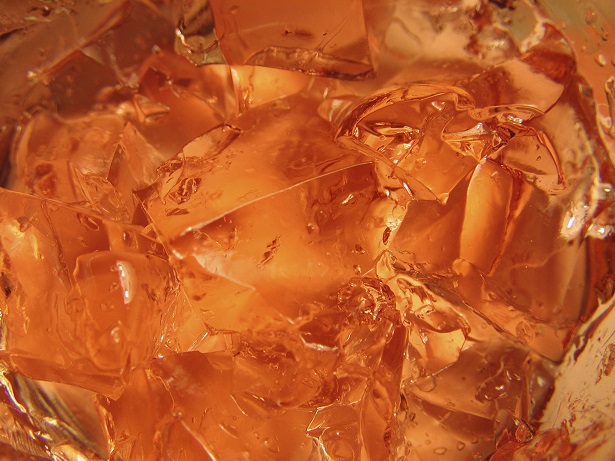 Five – get glycine. Goal – to provide the building blocks for glutathione. Glycine is an amino acid, a specific type of protein, which the population of the Western world gets nowhere near enough of.
Five – get glycine. Goal – to provide the building blocks for glutathione. Glycine is an amino acid, a specific type of protein, which the population of the Western world gets nowhere near enough of.
The average man feasts on steak and chicken wings, muscle meats which are full of cysteine and tryptophan; the main sources of glycine are skins, straggly connective tissues, and organs. As cavemen we feasted on those unappetising parts of animals because we would die if we didn’t, but things have changed. Glycine is the most important substance for the creation of glutathione outside of the three minerals outlined above. Many acne patients need more; if you’re an alcohol-lover you definitely will.
The best option? Easily this Great Lakes Pasture Raised Gelatin (amazon link). Gelatin is nothing but the aforementioned connective animal parts ground down into a convenient and easy to eat jelly. It has numerous other benefits for acne too (full article here). Otherwise, you can switch up your diet to incorporate more organ meats such as liver and kidneys, or even brain (you never know, your IQ might increase by a few points). Among normal sources of protein, the richest source of glycine is free range eggs.
Six – drink the right type. Goal – to avoid any nasty surprises. Full guide below.
Seven – avoid grains. Goal – to maintain optimal gut health. Grains whether it be barley, wheat, or corn in foods as common as bread, pasta, and cereal are some of the worst foods for digestion in the world.
There’s a near 20 page chapter on the subject in my eBook. Alcohol is a risk factor for leaky gut syndrome, but by removing grains you can quarantine the damage and limit its spread.
Eight – get more vitamin E. Goal – to relieve pressure on the antioxidant system. Vitamin E is not as strongly involved with alcohol detoxification as the other top dietary antioxidant, vitamin C, but by increasing your intake you can still relieve both vitamin C and glutathione. They will have less duties to perform elsewhere in the body, with vitamin E hunting down free radicals in the eyes, lungs and brain. Hence, the detoxification of alcohol will go far more smoothly. There’s a full guide to increasing vitamin E in this article, but one of the ultimate supplements is this Garden of Life Raw Vitamin E (amazon link).
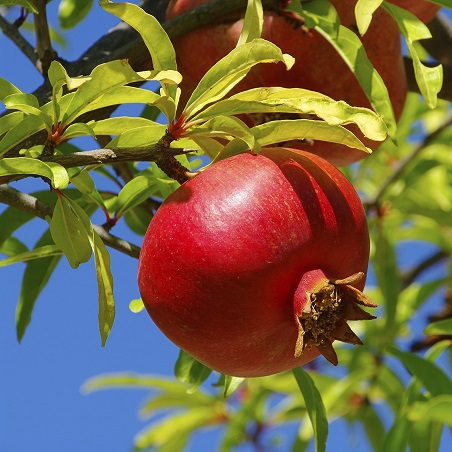 Nine – eat more antioxidants. Goal – to relieve pressure on the antioxidant system. The same rule applies to the endless minor antioxidants in nature, whether it’s polyphenols, resveratrol, lambertianin C, rutin or quercetin. Eat the classic antioxidant foods like berries, green vegetables, herbs, spices, coffee and very dark chocolate (it’s true, chocolate can be beneficial for acne).
Nine – eat more antioxidants. Goal – to relieve pressure on the antioxidant system. The same rule applies to the endless minor antioxidants in nature, whether it’s polyphenols, resveratrol, lambertianin C, rutin or quercetin. Eat the classic antioxidant foods like berries, green vegetables, herbs, spices, coffee and very dark chocolate (it’s true, chocolate can be beneficial for acne).
Ten – take the secret weapon, NAC. Goal – to rapidly replenish your antioxidant supplies. N-acetyl-cysteine is one tool that friendly neighbourhood doctors all across the Western world never go without. Why? NAC is the first line tool in the treatment of alcohol poisoning, because its ability to rapidly increase glutathione has no equal.
The cysteine portion of this supplement is the other amino acid, alongside glycine, which is all important for glutathione synthesis. On a day to day basis, most of us eat enough cysteine through meat, eggs and dairy. But NAC is excellent for rapidly increasing levels; it’s used for the same purpose in emergency rooms to replenish the liver’s glutathione following a painkiller overdose.
In fact, one study found that daily supplementation with NAC for eight weeks reduced total acne counts by 15% after two weeks, 25% after 4 weeks, and 50% after 8 weeks. NAC is not as necessary as the three minerals above, but it’s a fantastic secret weapon. Swallow one pill immediately after your final drink of the night for best results. The best product is this pure and powerful Thorne Research N-Acetylcysteine (amazon link).
There’s a ton of information above, but you don’t have to follow all of it. You can follow your own instincts, by judging how your skin reacts to one drink a day, or getting drunk once per week, or however you seek to enjoy alcohol. This is a general guide, you alone are the expert on your own acne and skin.
How to pick the greatest beverage for acne
Last but not least, there’s the question of whether beer, wine, spirits or cocktails are the best for your skin. The truth is that your choice of beverage makes a big difference; different drinks can contain either hidden acne villains or in the case of red wine, bonus nutrients that mitigate the damage.
White wine – widely considered to be inferior to red wine, and the research backs it up; red wine contain 5-10 times more phenolic compounds than the average white. Nor is there any of the famous supplement company cash cow resveratrol…
…but white wine contains a healthy serving of antioxidants nevertheless, just like its father the green grape. The carbohydrate count is tiny, at 3-5 grams per glass, nowhere near enough to turn your skin into an oil field.
Red wine – the still undefeated heavyweight champion of all alcohol drinks. This is one instance where the media hype is real. Red wine contains a variety of phenolic compounds but the most famous is the phytoalexin resveratrol.
Not only is resveratrol a potent antioxidant in its own right, but it also has the power to somehow boost your body’s production of one of its own, superoxide dismutase. Resveratrol is also linked to improved heart health and extended lifespan, which is what all the newspaper reports got hyped about.
Exquisite, high priced red wines have the highest antioxidant and resveratrol counts, but even basic table red had an ORAC score of 3873 per 100 grams compared to 5034 in cabernet. That compares excellently to the greatest fruit for acne of all time, the common strawberry, which scores 4300.
Red wine also has few hidden surprises, as the carb count is only 3-5 grams. The only risk is pesticide and mycotoxin contamination, but beers also have that problem, and you’re ingesting a major toxin anyway. An organic product is advisable if you’re a daily wine drinker; otherwise my judgement is that it’s not worth it unless you’re so rich that you use 5 dollar bills to keep your fireplace warm.
Hard cider – stuck in limbo; proper ciders can be a great source of antioxidants, just like the apples they’re derived from. The 2000-year old fermentation process can produce some healthy substances associated with improved digestion.
However, ciders also contain approximately 15 grams of carbohydrates per can, which will quickly stack up and kick start a pore-clogging nightmare. Stick to one per drinking session, unless you’re an exercise fanatic who expends carbohydrates regularly. Note: read this article for the full story on carbs and oily skin.
Whisky, brandy, cognac – the kings of spirits, thanks to the slow ageing in wood barrels. The compounds in the wood gradually dissolve into the clear spirit and imbue the liquid with a variety of antioxidants over time. Some cognac stays in the barrel for up to 70 years.
The sub-variety bourbon whisky is particularly rich in antioxidants (study). In fact, whisky actually contains more ellagic acid (a famous antioxidant that supplement companies are furiously attempting to capitalise on) than red wine. Other antioxidants in whisky include gallic acid and lyoniresinol.
Vodka, gin, clear rum – the lowly spirits. No carbohydrates, so no clogged pores, but no nutrition nor antioxidants whatsoever as you can tell by the clear colour. Pretty much neutral and useful if you’re swilling alcohol with the sole purpose of getting drunk.
Beer – the main thing acne-clearing enthusiasts fear about beer is its content of gluten, a major acne menace. It’s true that beers contain starch derived from barley, but the reality is that levels are so miniscule that only the most sensitive individuals need to worry.
One analysis of fifty beers concluded that 35 contained between 1 and 200 ppm of gluten, while 15 contained less than 1 ppm. Meanwhile, the average wheat bread contains approximately 75,000 ppm. The gluten problem is no problem in pretty much all beer unless you’re drinking multiple cans per day.
What’s more, beers have a surprisingly decent antioxidant count. Beer even held its own against white wine (but not red) in one study. However, beer isn’t perfect; they often contain far too many carbohydrates. The main differentiation factor is the richness of the beer; light beer contains 3-5 carbs, which is completely safe, while regular and dark/stout/microbrew beers contain up to 15 and 25 carbs respectively. Both of those totals are too high for acne-clearing purposes, so drink heavier beers irregularly, or stay loyal to lighter beers instead. Full article on beer and acne here.
Sugary cocktails – the name says it all, no matter how many nutritious fruits the bartender shoves in, the sugar content is way too high. Reserve for a treat, no matter how amazing they taste.
All the rest – the world of alcoholic drinks is so wide that you’ll always need your wits about you. We can’t offer advice on every drink from an Alpine bar or remote Tibetan valley, so here’s the knowledge to arm you to make your own decisions.
The important things to consider are firstly, the drink’s carbohydrate content. Secondly, whether it’s extremely sweet and hence bursting with inflammatory, pimple creating sugar.
Three, whether it’s derived from fruit, spices, or other healthy plant foods in some way; this will bless the beverage with antioxidants and other acne-clearing substances. Finally, whether there’s some other additive we haven’t considered; cocktails sometimes contain crazy ingredients.
Follow those instructions and stay vigilant and you cannot go wrong.
Conclusion
Your acne strategy when it comes to alcohol could not be simpler, 1) strengthen your body’s antioxidant reserves through diet and nutrition, 2) pick one of the healthier beverages, 3) drink alcohol for taste, or get drunk, whichever you choose, and 4) sit back and laugh as your skin is strong enough to withstand it.
Again, you should eliminate the boring sources of acne (vegetable oils, microwaveable ready meals, bread) so that you have plenty of capacity to maintain the pleasurable and fun ones, e.g. alcohol. Alcohol is a negative for acne overall, but by following the instructions above you can easily minimise its consequences.
I don’t recommend drinking more than a glass of wine daily, with one exception. If you’re chronically stressed and anxious then the reduction in stress could be very welcome. You’ll have to experiment to discover the truth.
Otherwise drinking alcohol with every meal will be a constant drain on your antioxidant stocks. Likewise, the tips above aren’t a license to drink yourself into oblivion every night – in that case there’ll be no derailing the acne train.
Nevertheless, with a few dead-easy alterations, going out and getting smashed up to two nights per week or simply enjoying wine is easily with your reach. Alcohol is one pleasure that you don’t have to abandon forever.
NEXT: the ultimate diet for clearing acne permanently
Thanks for reading!
This is one of the best articles I’ve ever read on this topic. Thank you!!
Thanks Jeff, you might like the article on beer as well. It goes more into depth on that particular beverage.